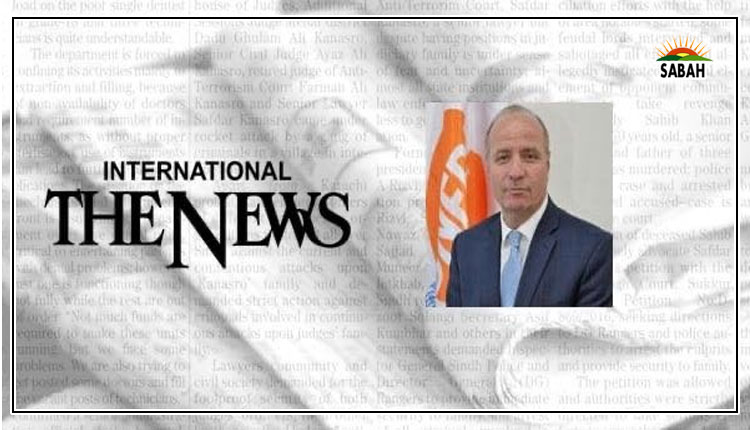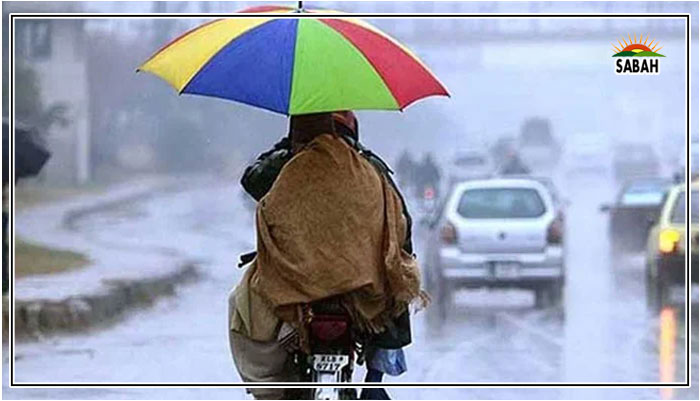The three stooges….Mahir Ali
EARLY yesterday, Australian time, three heads of government could be seen on TV screens, lined up behind podiums on the San Diego coastline: the US president flanked by the prime ministers of Australia and Britain. The occasion was the announcement of a project to provide Australia with nuclear-powered submarines in the future.
The first step will be for Australia to purchase up to three US Virginia-class submarines in the 2030s. The SSN AUKUS variety subs are not expected to surface (or submerge) until the 2040s. The UK, or whatever is left of it by then, will embrace the same model. Some of these boats are intended to be built in an Australian shipyard, although the initial components of the fleet will involve Australian funding for US manufacture.
The main impetus is based on growing fears of Chinas purported designs and the possibility of a military takeover of Taiwan. Any such mission would be a dumb move by Beijing. It would likely occur, though, long before Canberra has any nuclear submarines to throw into the fight, presumably at Washingtons initiative.
Joe, Rishi and Albo go fishing in murky waters.
I have been hearing about Australias future submarine project ever since my family settled here more than a quarter-century ago. One consistent theme has been that the nations existing fleet of Collins class submarines was no longer fit for purpose. For a long time, that purpose was hardly defined. But lately its become more obvious: a fear of China, exacerbated by Xi Jinpings reluctance to play nice.
Earlier this century, Australia agreed to purchase conventionally powered submarines from France. There were delays and cost blowouts in the years that followed, but Emmanuel Macron was miffed a couple of years ago when the previous Australian PM, without clearly alerting Paris, cancelled the deal and signed up to AUKUS with Joe Biden and Boris Johnson.
AUKUS might sound like the name of an extinct antipodean flightless bird, but it just stands for Australia-UK-US three-fifths of the global Anglosphere. For the first half-century of its existence as an ostensibly independent nation, Australia remained umbilically attached to the British empire the cord is yet to be severed as the royal component of its air force and navys nomenclature indicates. But in the postwar environment, it also latched on to the US, and in the past six decades or so that has become the dominant relationship.
That has been reflected for ages in the secretive US listening station at Pine Gap in the outback, and more recently by an increasing number of boots on the ground, not to mention unrelenting Australian participation in US wars from Korea and Vietnam to Afghanistan and Iraq. AUKUS will no doubt enhance the US presence, with US nuclear submarines scheduled to start docking at Australian ports in a few years, so that the kids can be initiated into the grown-up world of underwater warmongers.
The yellow peril is a long-standing trope in Western strategic thinking, initially targeting 19th-century Chinese migrant workers in the US and Australia. It was revived when China went communist and Vietnam successfully resisted French and American might. It went into cold storage while Beijings capitalist roaders held sway and the Soviet Union imploded, but re-emerged after Chinese capitalism proved a bit too successful, and the Communist Party elevated a leader willing to challenge US hegemony, euphemistically known as the rules-based order.
One does not need to endorse Xi Jinpings alarming predilections, notably his regimes possible designs on Taiwan, let alone Vladimir Putins misbegotten and misanthropic misadventure in Ukraine to raise questions about the Western response. The US military industrial complex is the biggest beneficiary of Russias shenanigans, which partly explains the lack of interest in halting that war. But what good can possibly come from seeking to establish a cordon sanitaire on Chinas southern periphery?
In the troubling event of hostilities breaking out, it will no doubt loudly be proclaimed that there was no provocation as in the case of Natos blithely misrepresented expansion eastwards.
Not all that long ago, it was just about possible to envisage Australia staying out of a conflict between its biggest trading partner and its closest military ally. Thats no longer conceivable: it would inevitably be a target in any US-China confrontation. Hopefully, it will never come to that. But if it does, it will likely be long before Australia has any nuclear-powered submarines of its own.
Yesterday, the sight of Biden in the Top Gun aviator sunglasses he wore in Kyiv last month flanked by his Australian and British flunkeys, Anthony Albanese and Rishi Sunak, talking about peace while preparing for war, spontaneously evoked the idea of the Three Stooges auditioning for Dr Strangelove.
mahir.dawn@gmail.com
Courtesy Dawn, March 15th, 2023












